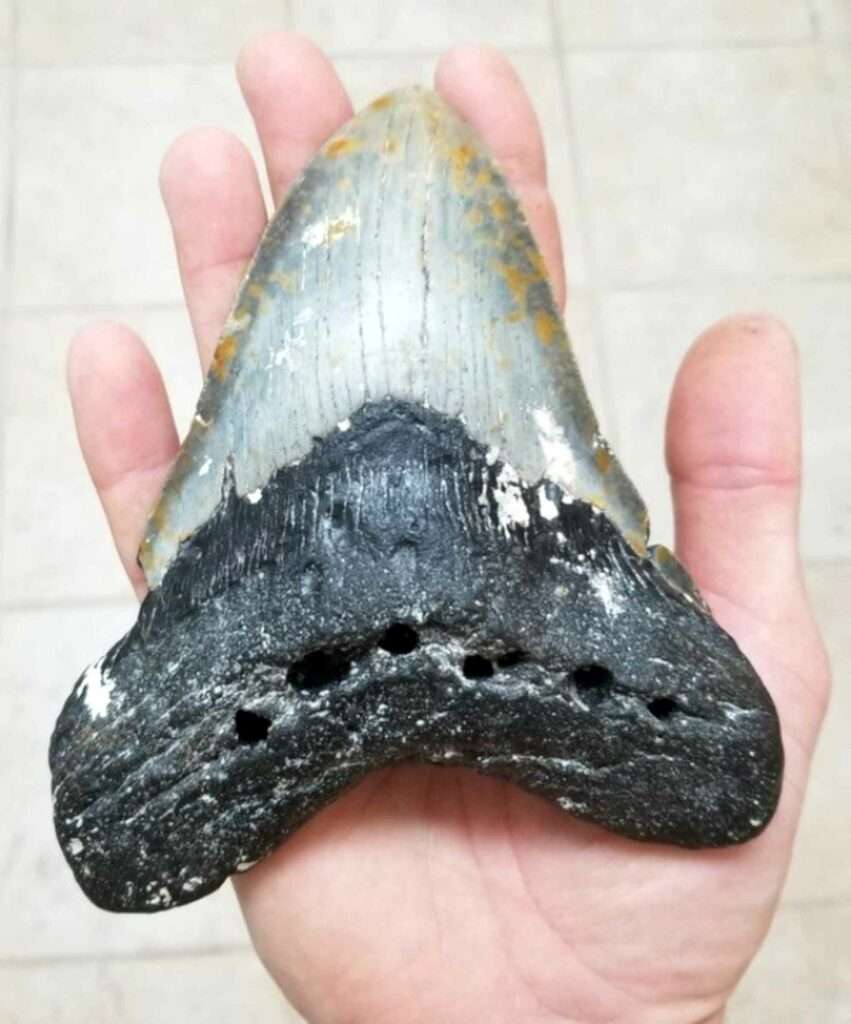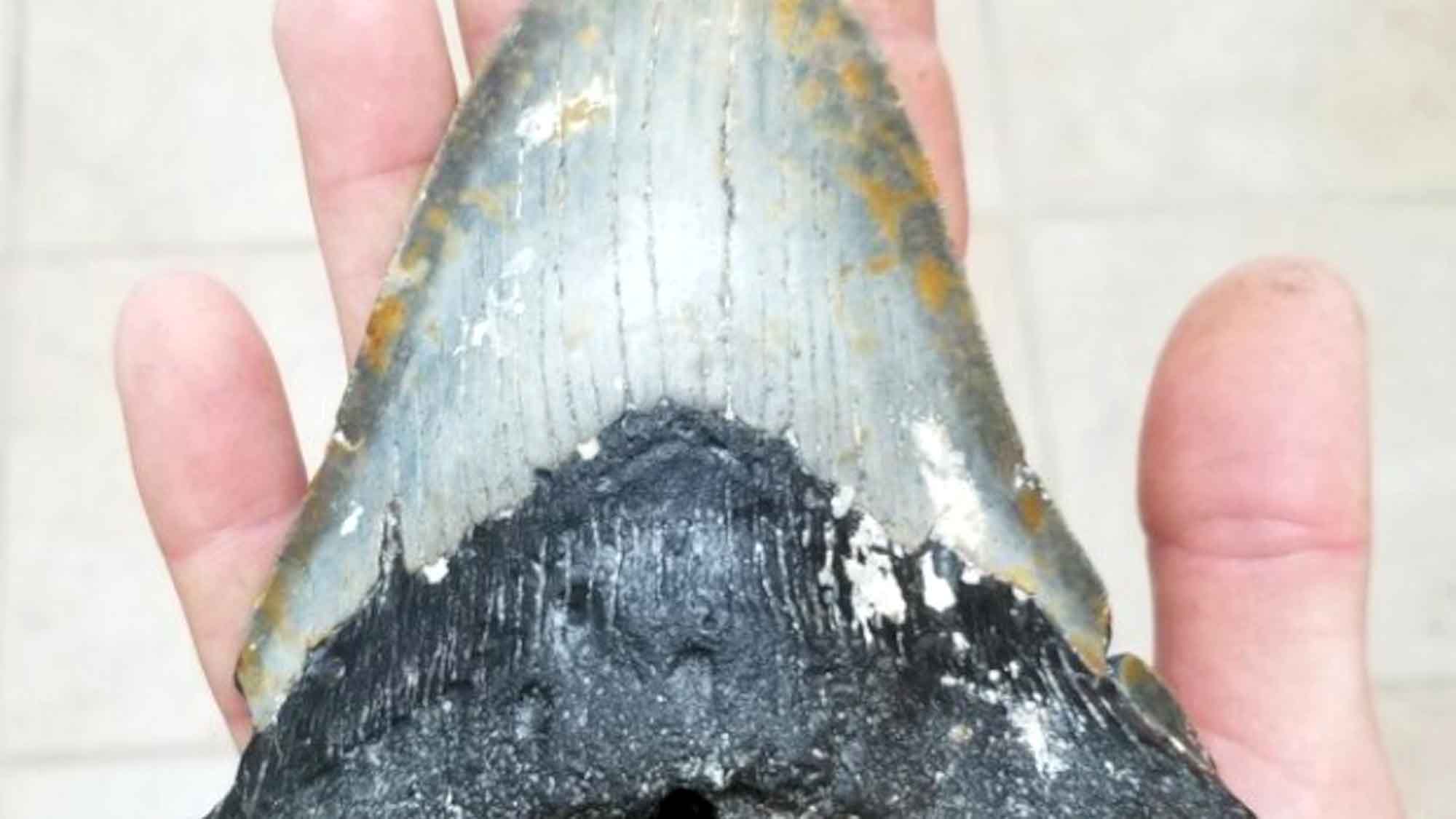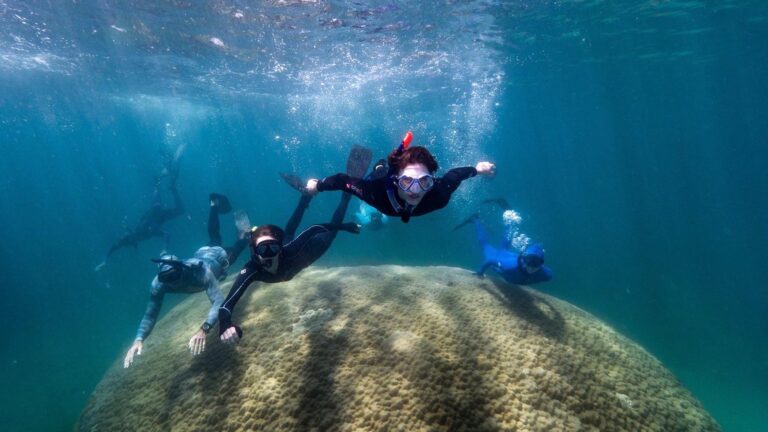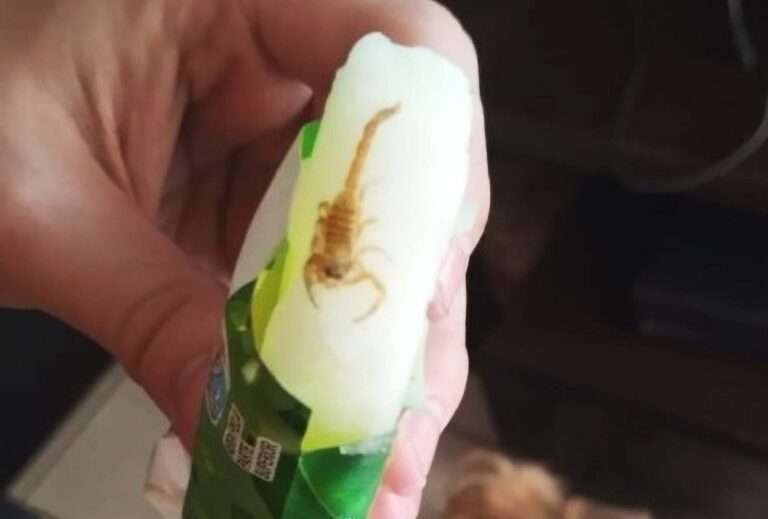The ultimate predator of predators was a massive 50-foot-long shark that was so powerful it even ate predators that ate other predators.
Prehistoric megatooth sharks that got their name from their massive teeth, which can each be bigger than a human hand, included the Megalodon, the largest shark that ever lived, as well as several related species.
Megalodon has been conservatively estimated at 15 metres long — 50 feet — while modern great white sharks typically top out at around five metres or 15 feet in length.
While sharks of one kind or another have existed since long before the dinosaurs — for more than 400 million years — these megatooth sharks evolved after the dinosaurs went extinct and ruled the seas until just 3 million years ago.
But based on research from crunching data during lockdown, scientists at Princeton University were able to create a ranking of predators from the past that confirmed that the prehistoric megatooth sharks were the apex predator above all others and would even have been able to challenge the way man interacted with the sea.
Emma Kast, a 2019 PhD graduate in geosciences, who is the first author of a new study in the current issue of Science Advances, said: “We’re used to thinking of the largest species — blue whales, whale sharks, even elephants and diplodocuses — as filter feeders or herbivores, not predators.
“But Megalodon and the other megatooth sharks were genuinely enormous carnivores that ate other predators, and Meg went extinct only a few million years ago.”
Her adviser Danny Sigman, Princeton’s Dusenbury Professor of Geological and Geophysical Sciences, added: “If Megalodon existed in the modern ocean, it would thoroughly change humans’ interaction with the marine environment.”

A team of Princeton researchers has now discovered clear evidence that Megalodon and some of its ancestors were at the very highest rung of the prehistoric food chain – what scientists call the highest “trophic level.”
Indeed, their trophic signature is so high that they must have eaten other predators and predators-of-predators in a complicated food web, say the researchers.
Kast, now at the University of Cambridge, said: “Ocean food webs do tend to be longer than the grass-deer-wolf food chain of land animals, because you start with such small organisms.”
Kast, who wrote the first iteration of this research as a chapter in her dissertation and is now at the University of Cambridge, said: “To reach the trophic levels we’re measuring in these megatooth sharks, we don’t just need to add one trophic level — one apex predator on top of the marine food chain — we need to add several onto the top the modern marine food web.”
To reach their conclusions about the prehistoric marine food web, Kast, Sigman and their colleagues used a novel technique to measure the nitrogen isotopes in the sharks’ teeth. Ecologists have long known that the more nitrogen-15 an organism has, the higher its trophic level, but scientists had never before been able to measure the tiny amounts of nitrogen preserved in the enamel layer of these extinct predators’ teeth.
Zixuan (Crystal) Rao, a graduate student in Sigman’s research group and a co-author of the current paper, said: “We have a series of shark teeth from different time periods, and we were able to trace their trophic level versus their size.”
She said that one way to tuck in an extra trophic level or two is cannibalism and several lines of evidence point to that in both megatooth sharks and other prehistoric marine predators.
But without a time machine, there was no easy way for the team to recreate the food webs of extinct creatures; very few bones have survived with teeth marks that say “I was chewed on by a massive shark.”
Fortunately, Sigman and his team have spent decades developing other methods, based on the knowledge that the nitrogen isotope levels in a creature’s cells reveal whether it is at the top, middle or bottom of a food chain.
Sigman said: “The whole direction of my research team is to look for chemically fresh, but physically protected, organic matter — including nitrogen — in organisms from the distant geologic past.”
A few plants, algae and other species at the bottom of the food web have mastered the knack of turning nitrogen from the air or water into nitrogen in their tissues. Organisms that eat them then incorporate that nitrogen into their own bodies, and critically, they preferentially excrete (sometimes via urine) more of nitrogen’s lighter isotope, N-14, than its heavier cousin, N-15.
In other words, N-15 builds up, relative to N-14, as you climb up the food chain.
Other researchers have used this approach on creatures from the recent past — the most recent being 10 to 15 thousand years — but there has not been enough nitrogen left in older animals to make the measurements, until now.
Related Story:
Giant Teeth From Extinct Prehistoric Megalodon Shark Found In Atacama Desert
These giant teeth from an extinct prehistoric megalodon shark have been found in the Atacama desert and a top expert has said that despite treasure hunters pillaging the area, Chile has “one of the largest scientific collections of megalodon teeth…
The reason is that soft tissue, like muscles and skin, is hardly ever preserved. To complicate matters, sharks do not have bones — their skeletons are made of cartilage.
But sharks do have one golden ticket into the fossil record: teeth. Teeth are more easily preserved than bones because they are encased in enamel, a rock-hard material that is virtually immune to most decomposing bacteria.
Sigman explained: “Teeth are designed to be chemically and physically resistant so they can survive in the very chemically reactive environment of the mouth and break apart food that can have hard parts.”
And in addition, sharks are not limited to the 30 or so pearly whites that humans have. They are constantly growing and losing teeth — modern sand sharks lose a tooth every day of their decades-long lives, on average — which means that every shark produces thousands of teeth over its lifetime.
Sigman continued: “When you look in the geologic record, one of the most abundant fossil types are shark teeth. And within the teeth, there is a tiny amount of organic matter that was used to build the enamel of the teeth — and is now trapped within that enamel.”
Since shark teeth are so abundant and are preserved so well, the nitrogen signatures in enamel provide a way to measure status in the food web, whether the tooth fell from a shark’s mouth millions of years ago or yesterday.
Even the largest tooth has only a thin casing of enamel, of which the nitrogen component is only a tiny trace. But Sigman’s team has been developing more and more refined techniques for extracting and measuring these nitrogen isotope ratios, and with a little help from dentist drills, cleaning chemicals and microbes that ultimately convert the nitrogen from within the enamel into nitrous oxide, they are now able to precisely measure the N15-N14 ratio in these ancient teeth.
“We’re a little bit like a brewery,” he said. “We grow microbes and feed our samples to them. They produce nitrous oxide for us, and then we analyze the nitrous oxide they produced.”
The analysis requires a custom-built, automated nitrous oxide preparation system that extracts, purifies, concentrates and delivers the gas to a specialized stable isotope ratio mass spectrometer.
“This has been a multiple-decades-long quest that I’ve been on, to develop a core method to measure these trace amounts of nitrogen,” Sigman said. From microfossils in sediments, they moved on to other types of fossils, like corals, fish ear bones and shark teeth. “Next, we and our collaborators are applying this to mammalian teeth and dinosaur teeth.”
Early in the pandemic, while her friends were making sourdough starters and bingeing Netflix, Kast pored through the ecologic literature to look for nitrogen isotope measurements of modern marine animals.
“One of the cool things that Emma did was really dig into the literature — all the data that’s been published over decades — and relate that to the fossil record,” said Michael (Mick) Griffiths, a paleoclimatologist and geochemist at William Patterson University and a co-author on the paper.
As Kast quarantined at home, she painstakingly built up a record with more than 20,000 marine mammal individuals and more than 5,000 sharks. She wants to take things much further. “Our tool has the potential to decode ancient food webs; what we need now is samples,” said Kast.
“I’d love to find a museum or other archive with a snapshot of an ecosystem — a collection of different kinds of fossils from one time and place, from forams near the very base of the food web, to otoliths — inner ear bones — from different kinds of fish, to teeth from marine mammals, plus shark teeth. We could do the same nitrogen isotope analysis and put together the whole story of an ancient ecosystem.”
In addition to the literature search, their database includes their own samples of shark teeth. Co-author Kenshu Shimada of DePaul University connected with aquariums and museums, while co-authors Martin Becker of William Patterson University and Harry Maisch of Florida Gulf Coast University gathered megatooth specimens on the sea floor.
“It’s really dangerous; Harry’s a dive master, and you really need to be an expert to get these,” said Griffiths. “You can find little shark teeth on the beach, but to get the best-preserved samples, you need to go down to the bottom of the ocean. Marty and Harry have collected teeth from all over the place.”
He added: “It’s been a really collaborative effort to obtain the samples to pull this together. In general, collaborating with Princeton and other regional universities is really exciting because the students are amazing and my colleagues there have been really great to work with.”
To find out more about the author, editor or agency that supplied this story – please click below.
Story By: Michael Leidig, Sub-Editor: Joseph Golder, Agency: Newsflash
The Ananova page is created by and dedicated to professional, independent freelance journalists. It is a place for us to showcase our work. When our news is sold to our media partners, we will include the link here.





